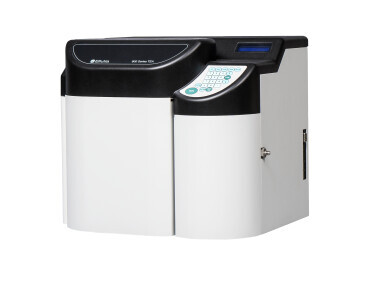Chromatography
Are There Microplastics in Food?
Feb 10 2021
A new study from Kansas State University has revealed farm soil, and therefore food supply, contains an alarmingly high level of microplastics. Scientists warn that microplastics now pose more of a threat to agricultural soil than oceans, hindering plant development and compromising the health of consumers.
“I had read in the literature that... cadmium and other toxic trace elements [are] increased when we have these particulate plastics in the soil. So, that was of concern to me,” says Mary Beth Kirkham, a plant physiologist and professor of agronomy at Kansas State University.
Microplastics support intake of contaminants
Kirkham started by exposure wheat plants to cadmium, a carcinogenic heavy metal present in car tyres and batteries. “Cadmium is everywhere,” said Kirkham. She then experimented with simultaneous exposure to microplastics. Laboratory analysis revealed wheat plants exposed to both microplastics and cadmium were significantly more contaminated with the heavy metal than those that had not been exposed to microplastics.
“The plastics really were acting as the vector for uptake of the cadmium,” she explains. “I think people just haven’t felt that microplastic uptake by plants is an issue,” warns Kirkham. “It just hasn’t been in the public eye.”
Sewage a key driver of microplastic pollution
Over the past decade microplastics have gained notoriety for contaminating the ocean. The tiny plastic pieces measure less than five millimetres in length, around the size of a small grain of rice. Researchers like Kirkham stress that agricultural contamination must also be considered, with one study estimating up to 730,000 tons of microplastics are deposited onto soils in the United States and Europe every year. They arrive via processed sewage used to manufacture artificial mulches, fertiliser and protective seed coatings.
Now, researchers are warning microplastics could have a dangerous impact on soil and plant health, as well as consumer wellbeing. During her experiment, Kirkham noticed wheat plants exposed to microplastics and cadmium struggled to grow, experiencing clogged soil pores, lack of aeration and root death.
Policymakers urged to act now
Without intervention, agricultural soils could suffer from irreversible contamination. Kirkham and her colleagues stress that governments need to place more emphasis on the importance of maintaining and building healthy soils to support plant growth, boost resiliency and avoid contamination.
To find out more about how human activity is damaging the environment, and what policymakers are doing to manage the crisis, don’t miss ‘New Concerns about PFAS in Food: The Convergence of Environmental Contamination and Food Safety’.
Digital Edition
Lab Asia 31.2 April 2024
April 2024
In This Edition Chromatography Articles - Approaches to troubleshooting an SPE method for the analysis of oligonucleotides (pt i) - High-precision liquid flow processes demand full fluidic c...
View all digital editions
Events
Apr 28 2024 Montreal, Quebec, Canada
May 05 2024 Seville, Spain
InformEx Zone at CPhl North America
May 07 2024 Pennsylvania, PA, USA
May 14 2024 Oklahoma City, OK, USA
May 15 2024 Birmingham, UK


















